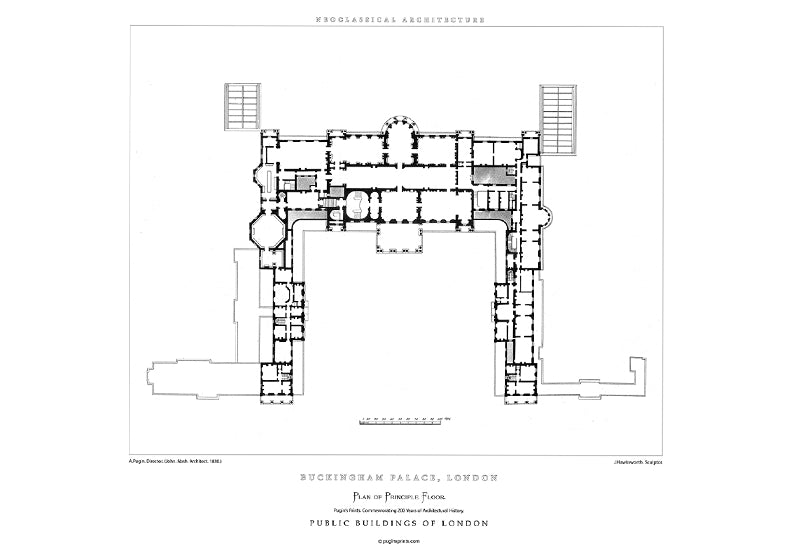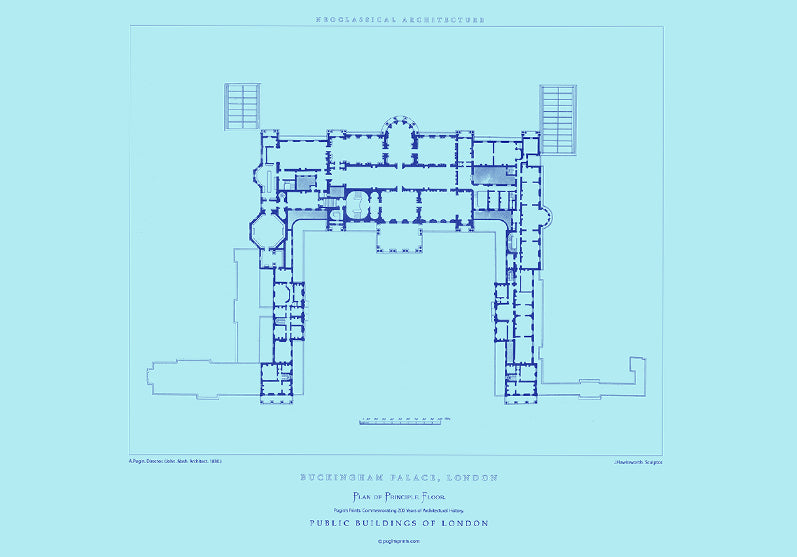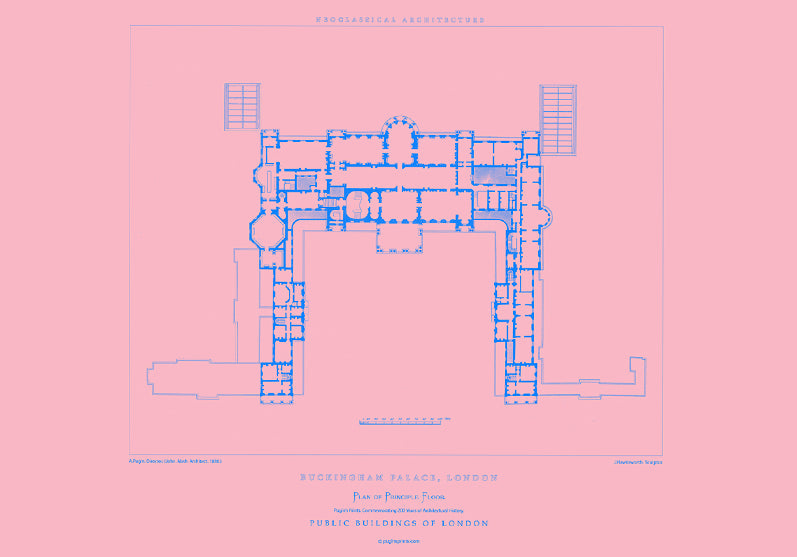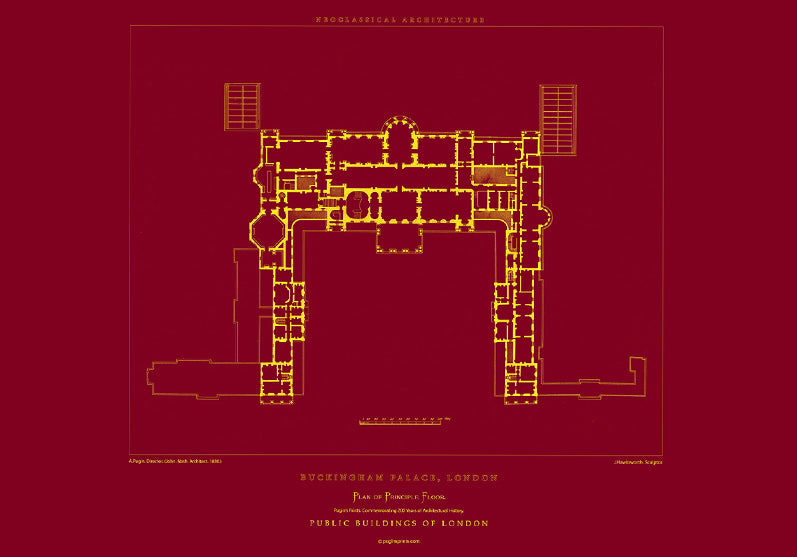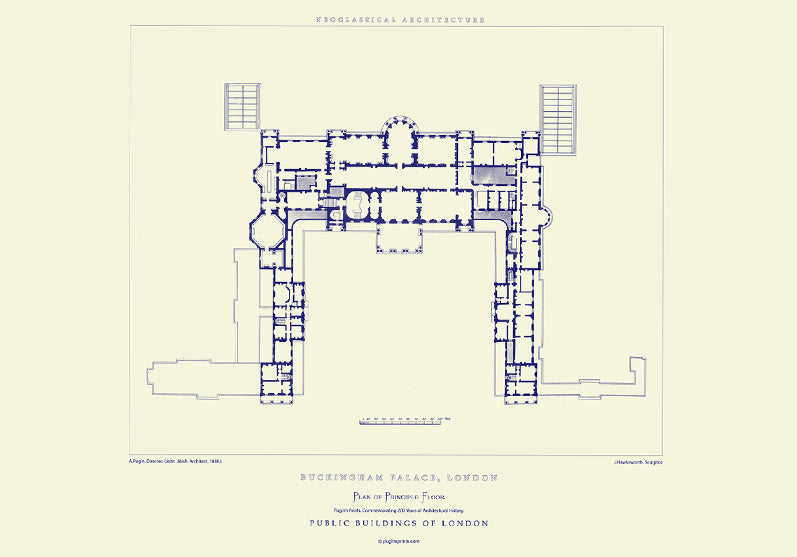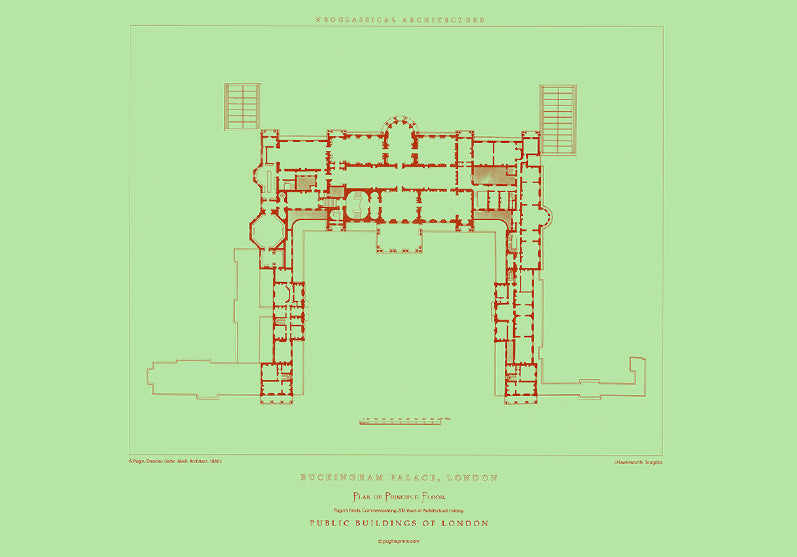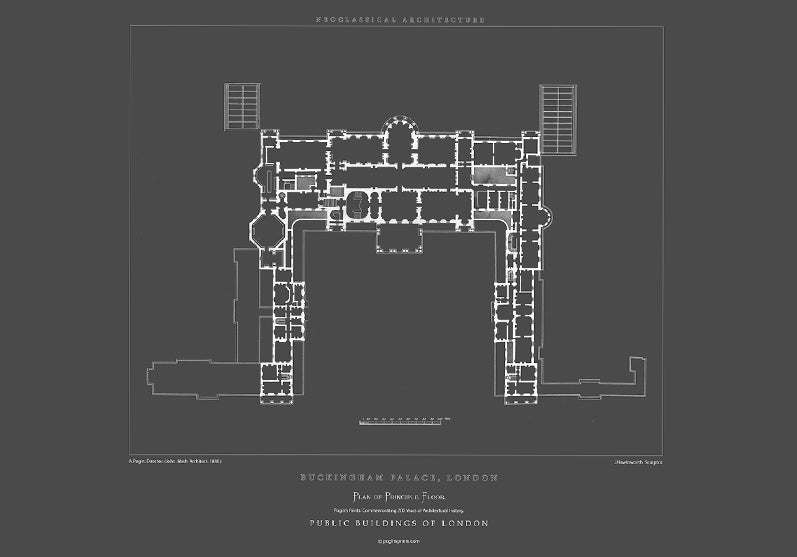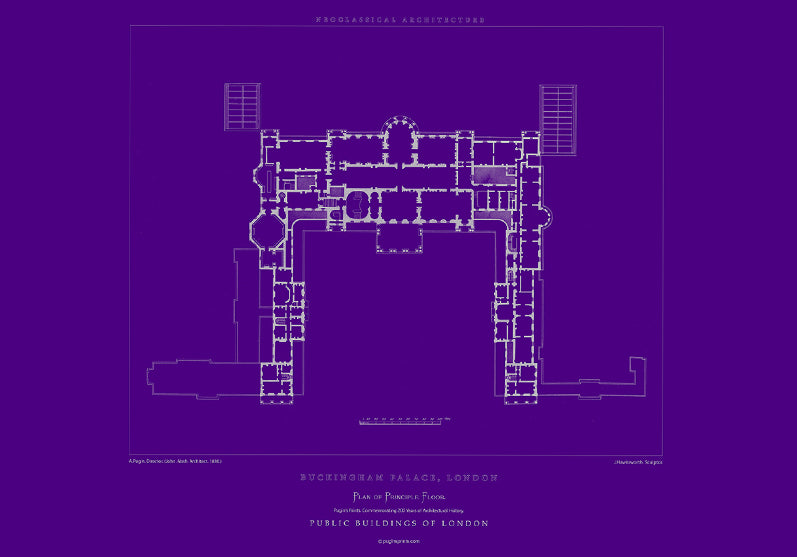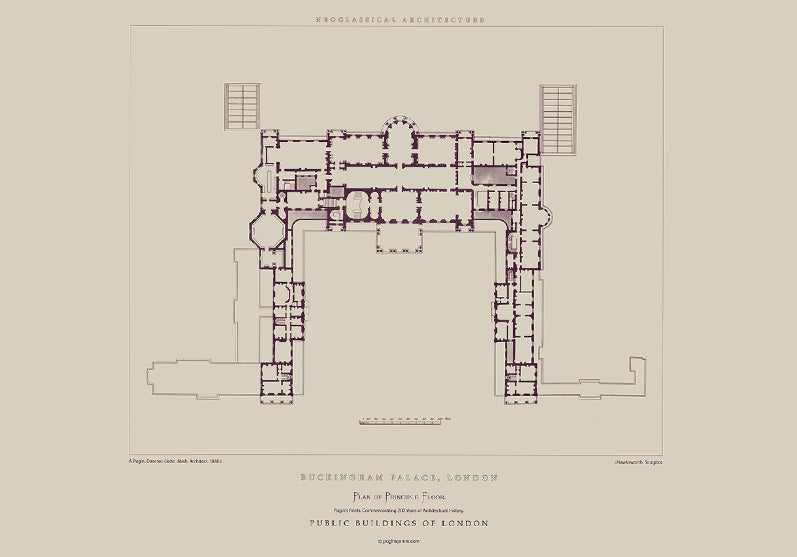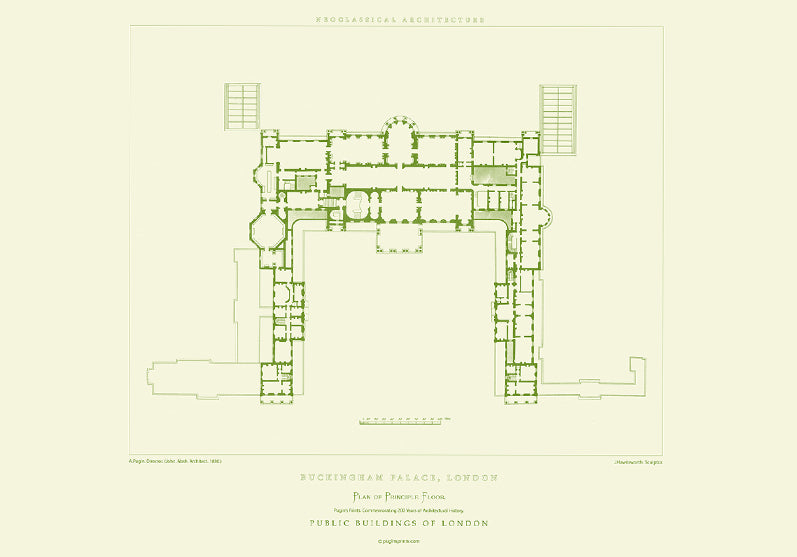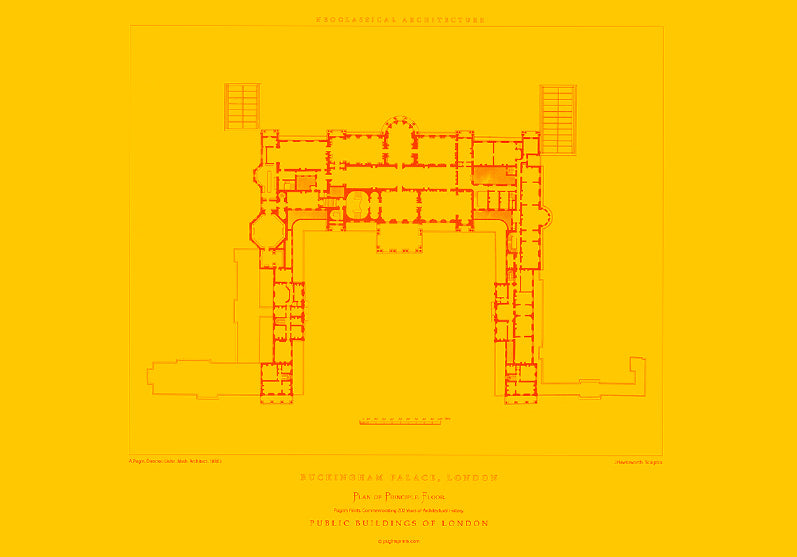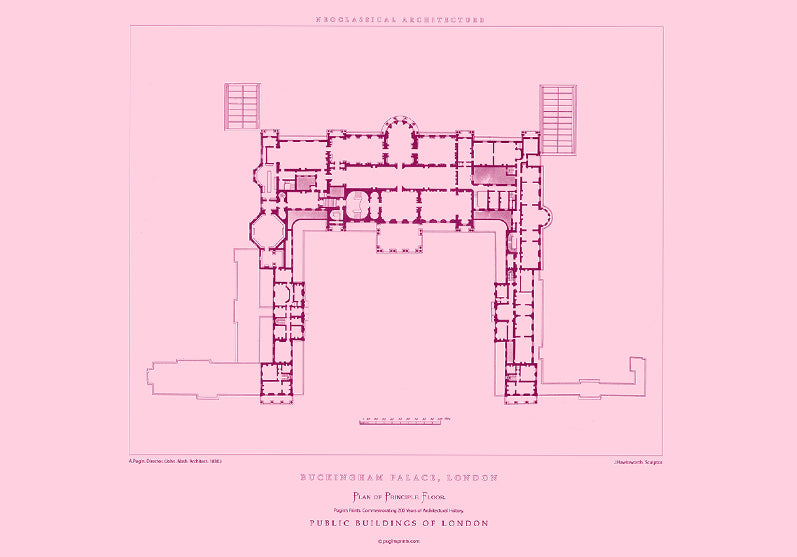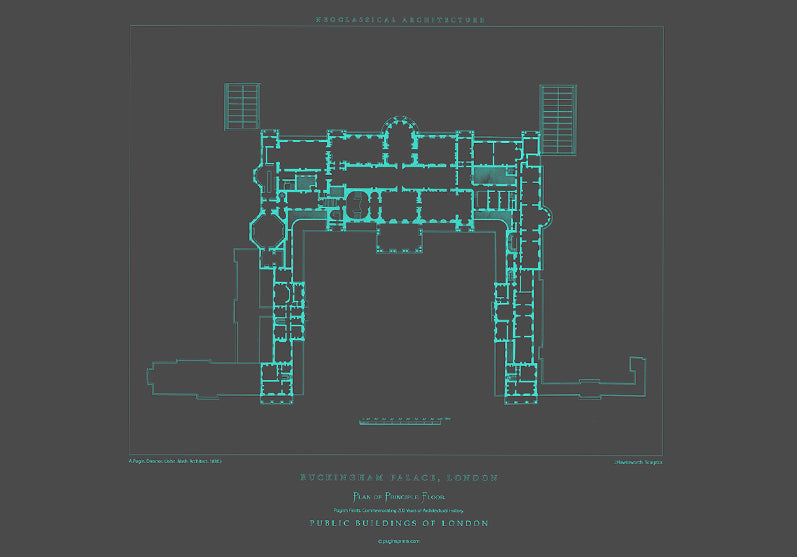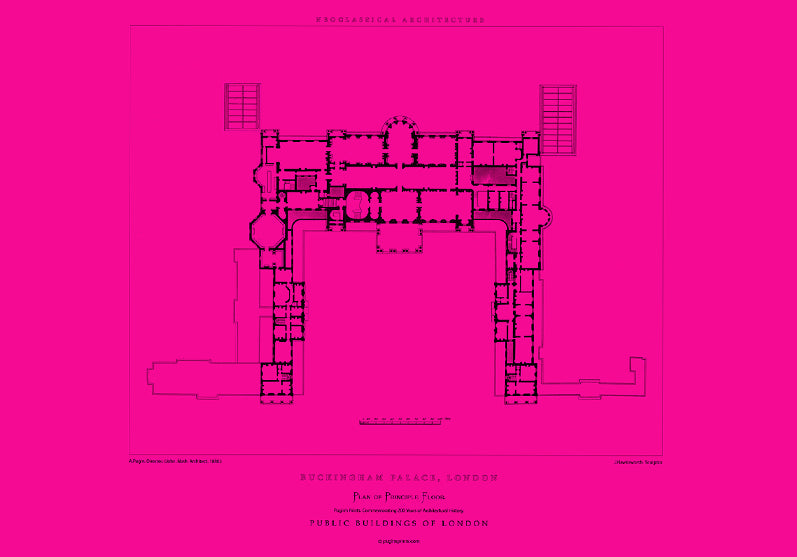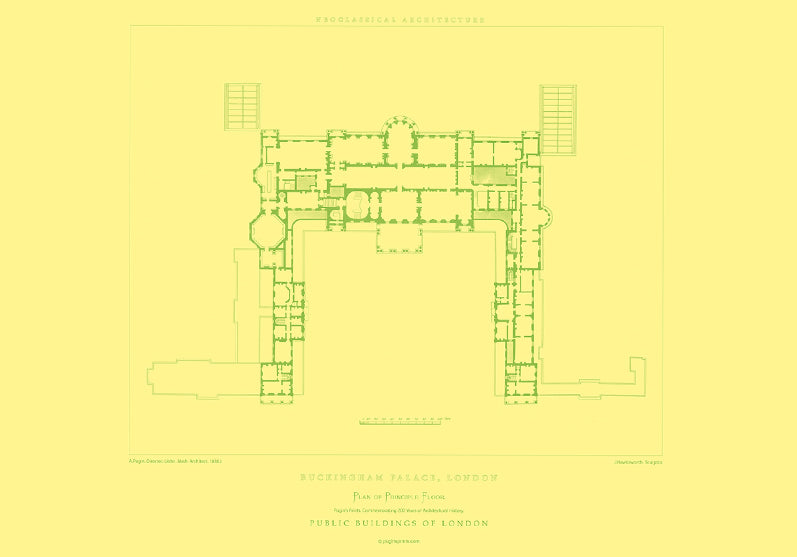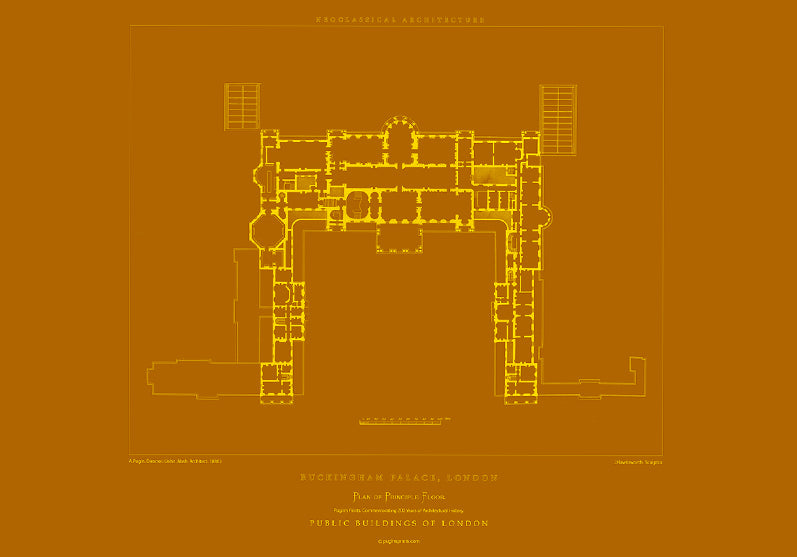Collection: Buckingham Palace
Architectural & Historical Origins
- Originally Buckingham House: Built in 1703 for the Duke of Buckingham, it wasn’t intended as a royal residence. King George III acquired it in 1761 for Queen Charlotte, dubbing it The Queen’s House.
- Transformed by Nash: Architect John Nash gave it its neoclassical façade under George IV, though he was later dismissed for overspending.
Scale & Structure
- 775 Rooms: Including 19 State Rooms, 52 royal and guest bedrooms, 188 staff bedrooms, 92 offices, and 78 bathrooms.
- The Ballroom: At 36.6m x 18m x 13.5m, it’s the largest room, used for investitures and state banquets.
- Secret Tunnels: Beneath the palace lies a network of tunnels, one of which once housed an unexpected guest discovered by George VI.
Royal Life & Symbolism
- The Royal Standard: Flown only when the monarch is in residence. If not, the Union Jack takes its place.
- Not Privately Owned: The palace is held in trust by the Crown Estate, it’s not the personal property of the monarch.
- Girl Guides at the Palace: Princess Elizabeth and Princess Margaret had their own Girl Guide troop on the grounds in the 1930s.
Quirks & Curiosities
- Fossils in the Walls: The palace’s zoolitic limestone contains fossilised remains of microscopic organisms, some over 200 million years old.
- Michael Fagan Incident: In 1982, a man famously broke into the Queen’s bedroom, a major breach that led to overhauls in royal security.
4 products
-
Buckingham palace 1
From £50.00From £50.00/ -
Buckingham palace 2
From £50.00From £50.00/ -
Buckingham palace 3
From £50.00From £50.00/ -
Buckingham palace 4
From £50.00From £50.00/






























































